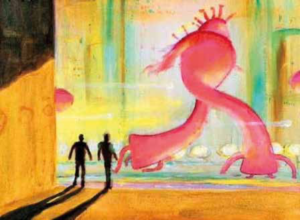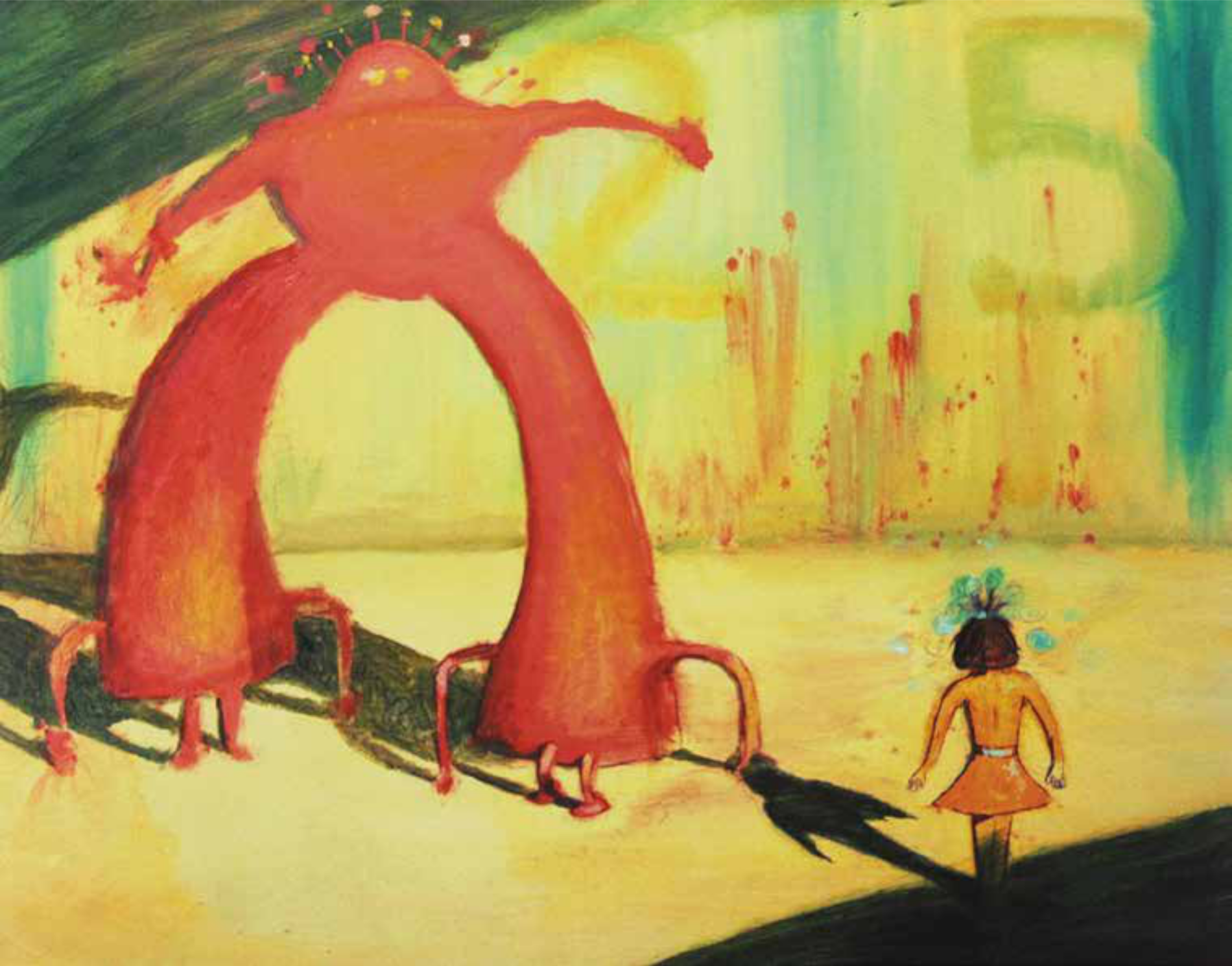For days, weeks and months we have lived in a world subjected to the rhythm of the pandemic. Upset. Awaiting revival. With Survive the only password. First, obviously, Covid19. Then all the consequences: the long confinement in the apartment and the need to build a new, unwanted, but imposed life: forced imprisonment. Mornings, afternoons evenings and nights without sleep and without really waking up. A continuous blur between one day and the next.  The rediscovery of boredom, in short. The need to see, and “belong” to relatives, lovers, friends but the impossibility of physically approaching them. Obtorto collo [Lat. ‘unwillingly’ tr.] we have become accustomed to new obligations: washing our hands often, sanitizing environments, keeping our distance, wearing masks (which have become the distinctive look of subsidies – coming in fits and starts and insufficient to deal with the crisis – those who manage a business can get some salvation by reading, or rereading, Images of Organisation 529 pages subtitled ‘metaphors of the organisation’ laid out by Gareth Morgan in the late 1980s, and destined, in a short time, to become an international best seller capable of profoundly changing the concept of ‘organization’ itself.
The rediscovery of boredom, in short. The need to see, and “belong” to relatives, lovers, friends but the impossibility of physically approaching them. Obtorto collo [Lat. ‘unwillingly’ tr.] we have become accustomed to new obligations: washing our hands often, sanitizing environments, keeping our distance, wearing masks (which have become the distinctive look of subsidies – coming in fits and starts and insufficient to deal with the crisis – those who manage a business can get some salvation by reading, or rereading, Images of Organisation 529 pages subtitled ‘metaphors of the organisation’ laid out by Gareth Morgan in the late 1980s, and destined, in a short time, to become an international best seller capable of profoundly changing the concept of ‘organization’ itself.
 The volume, translated in Italy in 1991 (the first Italian edition is shown in our photo) and reprinted here seven more times, has continued to sell, to be in demand (the latest edition was in 2015, from the presses of FrancoAngeli at 35 euros). No one previously had demonstrated so well the benefits of developing a multi-perspective approach to studying organizations so completely, clearly and convincingly. “Each phase of development – Morgan writes on page 379 – activates a series of conditions that give rise to its own overcoming.” In short, a new way of looking through the window that invites the entrepreneurial individual to give up obsolete schemes and continuously find new ways in view of contextual changes, for good or for bad, which will certainly happen. “This approach writes Morgan on the same page – helps us to understand that managing an organization, leading a society and managing one’s personal life means knowing how to manage contradictions” and then observes: “change is able to organize itself and is an emerging phenomenon that cannot be predetermined or controlled.” The undoubted strength of this book’s ‘metaphors’ approach lies in suggesting that even before putting techniques and tools in place, carrying out an organizational design means adopting a concept and looking at the world through the filter of that concept itself. In particular, the concepts/metaphors proposed by Morgan are eight: Machine, Organism, Brain, Culture, Politics, Psychic prison, Change, Domain. Each is elaborated in a dedicated chapter. The current crisis has forced almost all organizations/companies to review their management parameters. And so, within a few days, restaurants were forced to equip themselves with plexi-glass panels, create home delivery services, write menus from scratch and – in practice – redesign the restaurant as workplace following new and urgent paradigms. All this is, in essence, is the method suggested by Morgan, of being mentally ready for change. Thanks to this approach, and despite the all too well-known trappings of the bureaucracy, many are surviving the tempest, but many, unfortunately, have remained with zero turnover, or worse, have had to shut up shop. The difference between the former and the latter sometimes lies specifically in a different approach to the matter of work, that is, adherence to one type of ‘metaphor’ rather than another. Each of us, at least in the workplace, is what is perceived and experienced by others, not what we think we are. Images, through the use of metaphors, helps us to regain our grasp on social reality: to understand when this should be changed, how and over what timeframe.
The volume, translated in Italy in 1991 (the first Italian edition is shown in our photo) and reprinted here seven more times, has continued to sell, to be in demand (the latest edition was in 2015, from the presses of FrancoAngeli at 35 euros). No one previously had demonstrated so well the benefits of developing a multi-perspective approach to studying organizations so completely, clearly and convincingly. “Each phase of development – Morgan writes on page 379 – activates a series of conditions that give rise to its own overcoming.” In short, a new way of looking through the window that invites the entrepreneurial individual to give up obsolete schemes and continuously find new ways in view of contextual changes, for good or for bad, which will certainly happen. “This approach writes Morgan on the same page – helps us to understand that managing an organization, leading a society and managing one’s personal life means knowing how to manage contradictions” and then observes: “change is able to organize itself and is an emerging phenomenon that cannot be predetermined or controlled.” The undoubted strength of this book’s ‘metaphors’ approach lies in suggesting that even before putting techniques and tools in place, carrying out an organizational design means adopting a concept and looking at the world through the filter of that concept itself. In particular, the concepts/metaphors proposed by Morgan are eight: Machine, Organism, Brain, Culture, Politics, Psychic prison, Change, Domain. Each is elaborated in a dedicated chapter. The current crisis has forced almost all organizations/companies to review their management parameters. And so, within a few days, restaurants were forced to equip themselves with plexi-glass panels, create home delivery services, write menus from scratch and – in practice – redesign the restaurant as workplace following new and urgent paradigms. All this is, in essence, is the method suggested by Morgan, of being mentally ready for change. Thanks to this approach, and despite the all too well-known trappings of the bureaucracy, many are surviving the tempest, but many, unfortunately, have remained with zero turnover, or worse, have had to shut up shop. The difference between the former and the latter sometimes lies specifically in a different approach to the matter of work, that is, adherence to one type of ‘metaphor’ rather than another. Each of us, at least in the workplace, is what is perceived and experienced by others, not what we think we are. Images, through the use of metaphors, helps us to regain our grasp on social reality: to understand when this should be changed, how and over what timeframe.
A book and a recording too. In 2002 the Flaming Lips, a dream-pop team based in Oklahoma City, issued the incredible abstract absurd Yoshimi Battles the Pink Robots, colour sounds, Japanese travels and a demon – which looked like the coronavirus (see the cover to believe it) but drawn eighteen years ago (!) – and was destroyed, disintegrated by a little girl. Listen, listen and read. Happy 2020 (at least in the second half).
